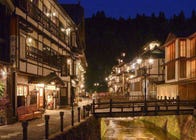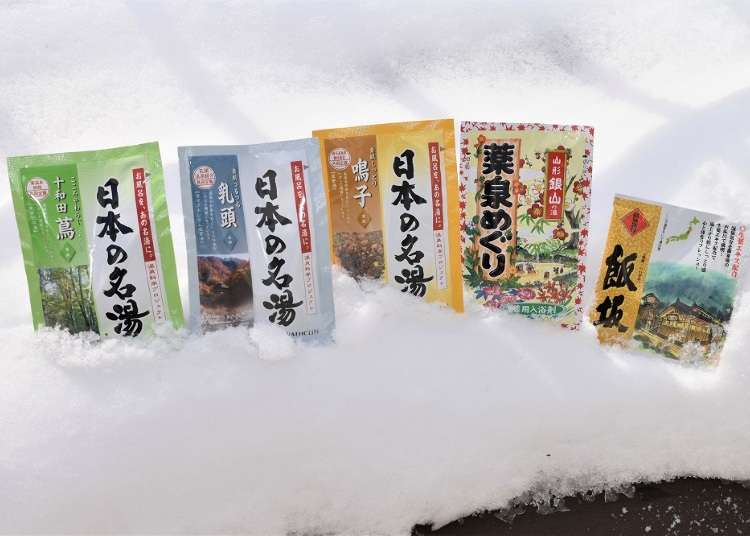
Japan as a country is big on onsen hot springs and bath culture. This is quite well-reflected in the nearly 3,000 hot spring resorts that can be found throughout the country, as well as the nation's long history of adoration for natural hot springs.
The different healing effects a hot spring can have on a person's mind and body depending on the quality of the water is certainly one of the main reasons for its enduring popularity.
One of the regions in Japan with a relatively greater density of hot springs is the Tohoku region, which includes well-known prefectures such as Fukushima, Aomori, and Akita. Since traveling too far from home isn't recommended in current conditions, here's a great way to bring the famous baths of Tohoku right into your very own home and bathtub: Japanese bath salts!
The following recommendations have all been thoroughly tested before making it onto the list, so that we can help you tour the best onsen in Tohoku without leaving the comfort of your own bathroom!
- Table of Contents
-
- 1. Aomori Prefecture's Tsuta Onsen (Japan's Famous Baths - Towada Tsuta)
- 2. Akita Prefecture's Nyuto Onsen (Japan's Famous Baths - Nyuto)
- 3. Miyagi Prefecture's Naruko Onsen (Japan's Famous Baths - Naruko)
- 4. Yamagata Ginzan no Yu (Yamagata Prefecture's Ginzan Onsen)
- 5. Fukushima Prefecture's Iizaka Onsen (Onsen Ryoko - Iizaka)
- Here's a little more about the Japanese bath salt manufacturers featured in this article
- Now you can bathe in luxury without needing to leave home
1. Aomori Prefecture's Tsuta Onsen (Japan's Famous Baths - Towada Tsuta)
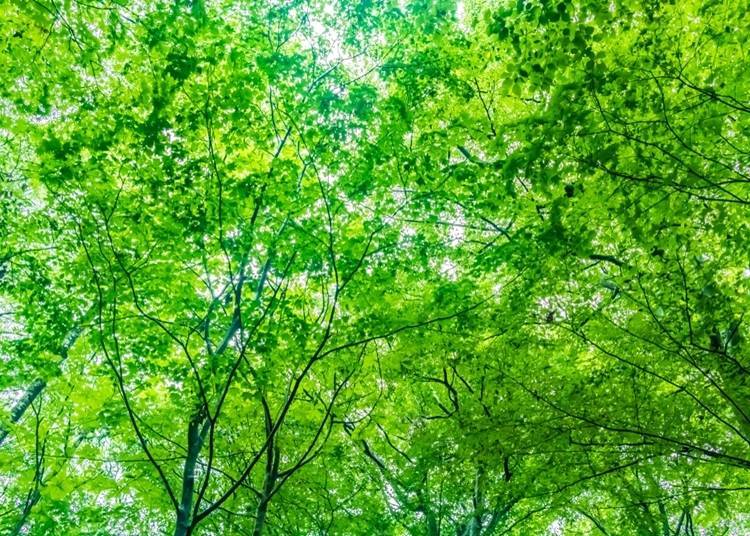
Aomori's Tsuta Onsen is a hot spring resort surrounded by the virgin beech forests of Towada Jukai. Spring water bubbles up from the bottom of the resort's bath areas without ever being exposed to the air, preserving the full force of its healing effects on nerve pain, rheumatism, and other physical dysfunctions.
This ancient bath is intricately interwoven with nature around it and has been refreshing people for thousands of years.
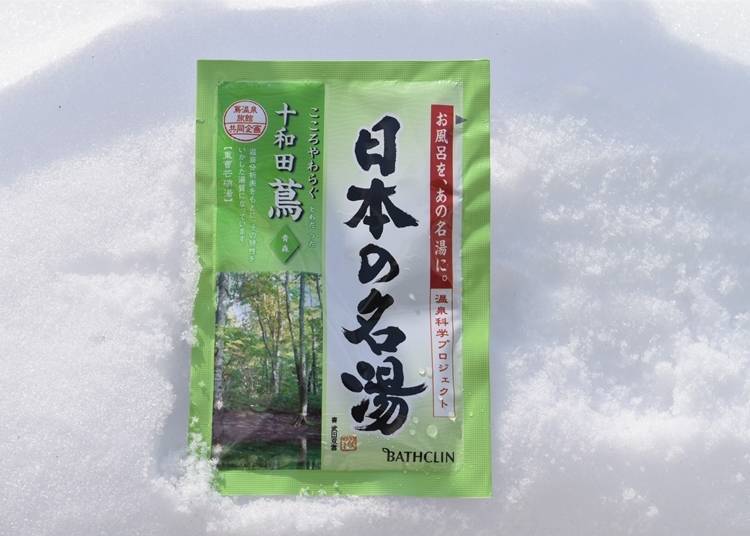
To experience Tsuta Onsen's excellent spring quality at home, check out Bathclin's "Japan's Famous Baths - Towada Tsuta" bath salt.
This cloudy bath salt fills the water with a fresh and vivid green color upon application. There are a number of active ingredients in it, such as dehydrated sodium sulfate and sodium hydrogen carbonate, and the bath salt has been designed to give off a pleasant aroma that brings the image of fresh greenery to mind.
Bathers can close their eyes and feel as if they were in the embrace of Tsuta's primitive beech forest while enjoying their soak. The warmth of the water lingers for a while after leaving the bathtub, which enhances the health effects of the minerals, promotes blood circulation, and relieves fatigue for a much longer time.
Price reference: "Japan's Famous Baths - Thrilling Cloudy Baths" costs about 800 yen for 14 assorted packs of 8 types of baths. (MSRP: 789 yen, tax excluded)
2. Akita Prefecture's Nyuto Onsen (Japan's Famous Baths - Nyuto)
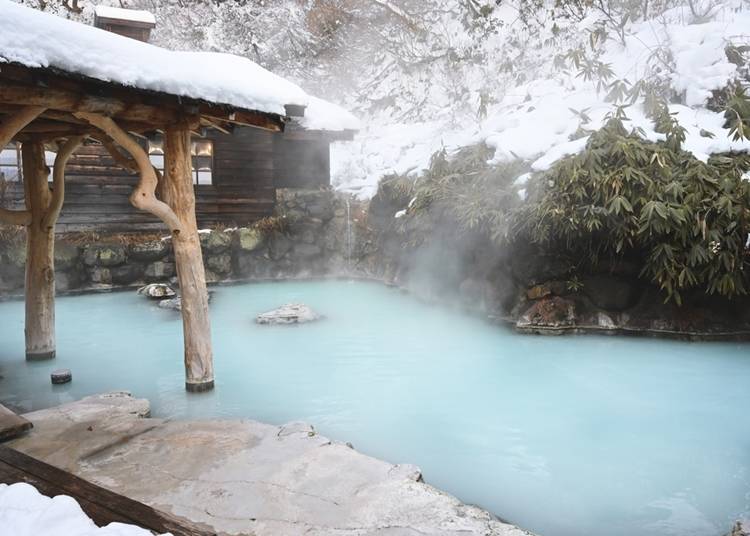
Nyuto Onsen refers to a collection of seven hot spring resorts (Tsuru no Yu, Tae no Yu, Ganiba, Okama, Magoroku, Kuroyu, and Kyukamura Nyuto Onsenkyo) located at the base of Mount Nyuto in Towada-Hachimantai National Park.
Bath waters are drawn from ten different spring sources found in the locality, each having a unique mineral makeup, and the area is surrounded by primitive beech forests and vivid blue skies. The hot springs in Nyuto Onsenkyo are touted for having a healing effect on both mind and body.
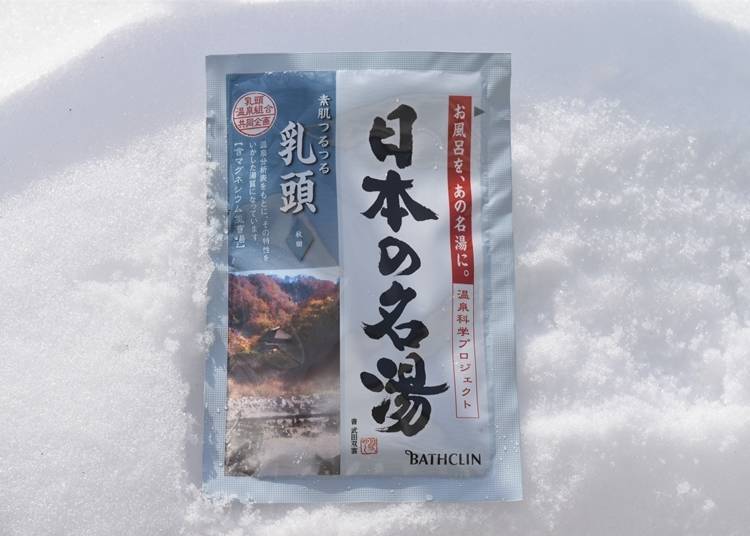
"Japan's Famous Baths - Nyuto" is another cloudy Japanese bath salt sold by Bathclin, and this time, it turns the bathwater into a milky-white color while simultaneously giving it a texture that is pleasant to the touch.
Active ingredients in the formula include minerals such as magnesium sulfate and sodium hydrogen carbonate. The fragrance given off by the bath salt is that of fresh green leaves, meant to soothe frayed nerves.
As you close your eyes and relax, the calming scenes of Nyuto's lush beech forests may surface in your mind, enhancing your relaxation. The bath is said to be good for cold sensitivity, stiff shoulders, eczema, and heat rashes.
Since the bath salt keeps the body warm for a longer time than usual, we highly recommend using it during those nasty cold spells!
3. Miyagi Prefecture's Naruko Onsen (Japan's Famous Baths - Naruko)
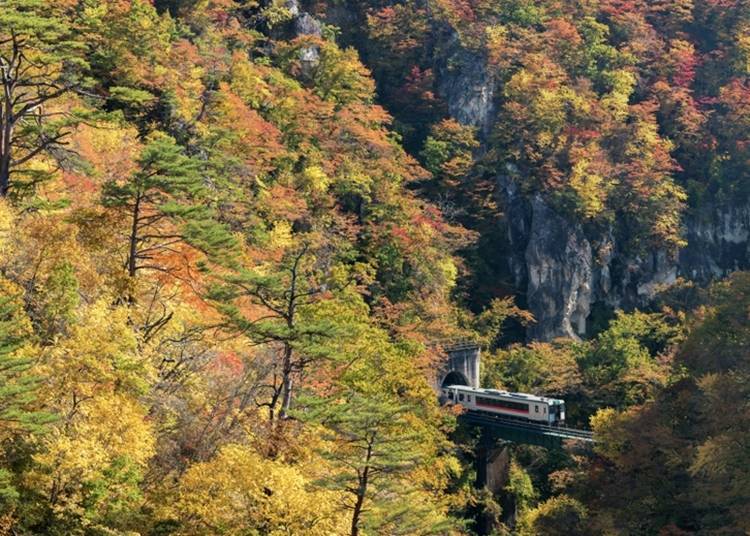
Naruko Onsen is located in the northern part of Miyagi, a prefecture renowned for beautiful valleys.
The hot spring has warmed and healed local residents for thousands of years since its establishment and is counted among the top three baths of the Oshu region (an area comprising the prefectures of Fukushima, Miyagi, Iwate, Aomori, and parts of Akita).
Being a famous hot spring village has its perks: hotels and traditional Japanese inns galore, public bathhouses for days, and easy transportation access to the area's most famous baths.
As a major production place for Japan's iconic kokeshi wooden dolls, you'll find an abundance of them on sale in the myriads of souvenir stalls that line the streets as well.
One of the best ways to soak in the atmosphere of the hot spring village is to put on a pair of clackety wooden clogs, a tanzen (padded kimono) on top of your regular bathrobe, and just take a nice, relaxing stroll down the scenic streets.
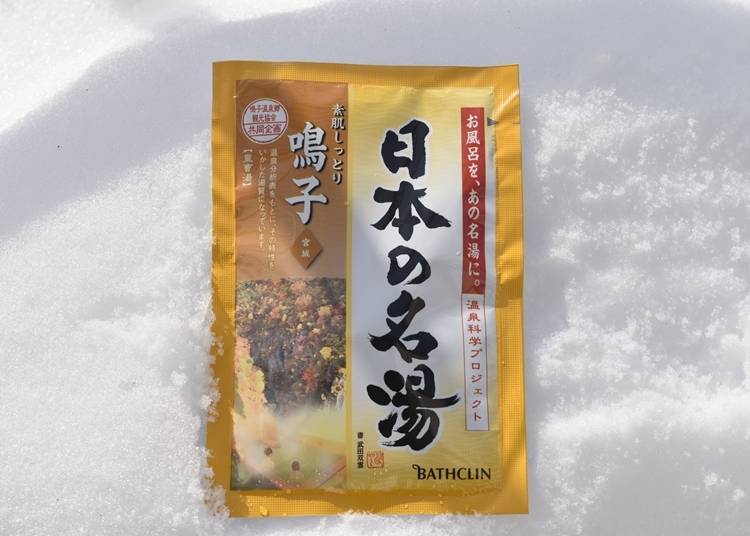
So, how does one take the mood of Naruko Onsen back home? Simply break out a packet or two of Bathclin's "Japan's Famous Baths - Naruko" Japanese bath salts, containing the active ingredients sodium hydrogen carbonate and dried sodium sulfate, among other beneficial minerals.
Specially formulated to turn the water into a pleasant orange shade reminiscent of the valley's famous fall foliage, this bath salt sure knows how to set the mood!
All you can do is relax as you slip smoothly into the treated water and surround yourself in its mellow fragrance. These Japanese bath salts is especially recommended for those looking for help with acne, heat rashes, eczema, and other skin-related disorders. It's also gentle enough for toddlers older than three months, so feel free to use it for a family bath bonding session too!
Price reference: "Japan's Famous Baths - Blissful Luxury" costs about 800 yen for 14 assorted packs of 10 types of baths. (MSRP: 789 yen, tax excluded)
4. Yamagata Ginzan no Yu (Yamagata Prefecture's Ginzan Onsen)
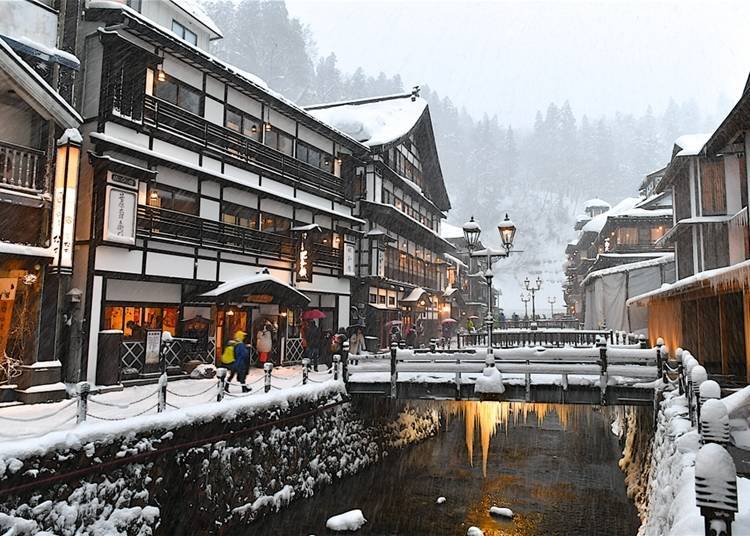
Ginzan Onsen takes its name from Nobesawa Ginzan, a prosperous silver mine that opened in the year 1456. The milky-white bathwater here is also known as Dewa's Famous Bath and dominated top positions in onsen popularity ranking lists during the Edo Period (1603 to 1868 C.E.).
As you can see, the onsen has been attracting the attention of many travelers since ancient times. You'll find a number of tall, Western-looking traveler's lodges made of wood located on both sides of the river that flows through the village.
When the old-style street gas lamps are lit up at night, the entire mood shifts dramatically, and you would be forgiven for thinking you've been transported back in time!
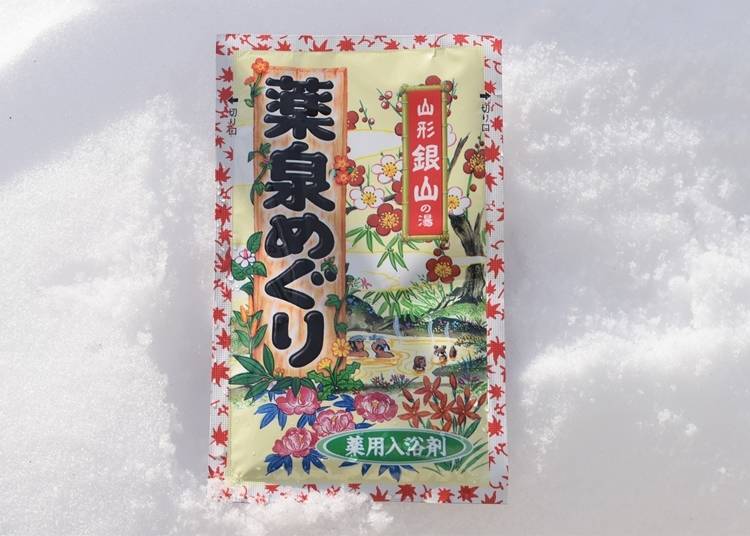
Earth Corporation's "Yakusen Meguri - Yamagata Ginzan no Yu" is the bath salt to use to get that Ginzan Onsen experience at home.
The bath salt, which contains active ingredients such as dried sodium sulfate, will give the water a milky-white cloudy look and is touted for having beneficial effects on fatigue relief, stiff shoulders, back pain, nerve pain, chills, cold sensitivity, heat rashes, eczema, and more.
Opening a packet of this Japanese bath salt will also fill the entire room with a pleasant aroma that is usually present only at hot spring resorts. As always, closing your eyes and letting your imagination take you directly to Ginzan Onsen is the best way to relax as you let the smoothly textured bathwater work its magic and warm you up from the inside-out.
Be careful, though! The whole experience is so comfortable, you may find it difficult to eventually extricate yourself from it!
Price reference: Comes in a pack of 4 assorted bath salts inspired from selected onsen in Hokkaido, Yamagata, Kagoshima, and Nagano. Each box is about 600 yen (Source: Live Japan).
5. Fukushima Prefecture's Iizaka Onsen (Onsen Ryoko - Iizaka)
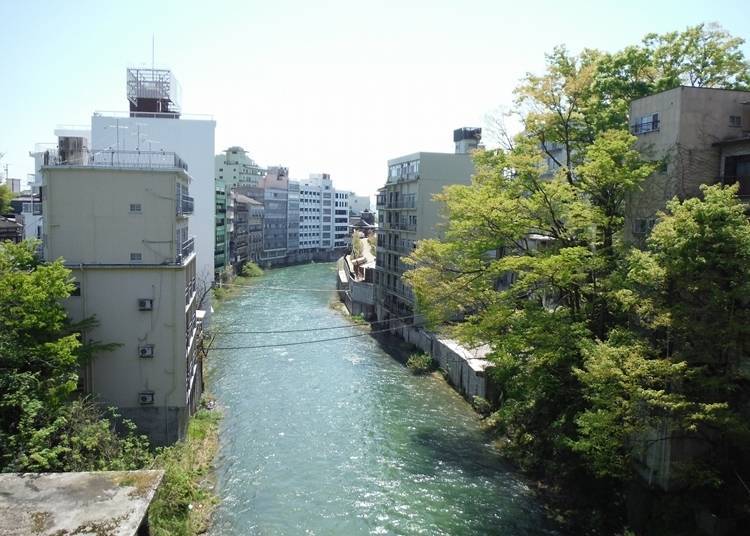
The historic Iizaka Onsen hot spring makes the bold claim that it was first discovered during the Jomon Period (approximately 14,000 to 300 B.C.E.). Matsuo Basho, an iconic Japanese poet, wrote about the place in his book, Oku no Hoshomichi (The Narrow Road to the Interior), adding to its fame.
Other than the hot springs that can be found in hotels and traditional Japanese inns, there are also nine public baths - each with a distinctive appeal. Many travelers have a good time visiting and dipping in every one of these public baths. Perhaps you will too!
The two types of spring quality you'll find here are alkaline low tonicity and low mineral density. Temperature-wise, the water is pretty toasty at the source, ranging between 50 to 60C (122 to 140F) or higher! Locals love their baths hot, but these temperatures may be a bit of a system shock for travelers not used to them, so do check if this is something acceptable first before lowering your entire body into the bath!
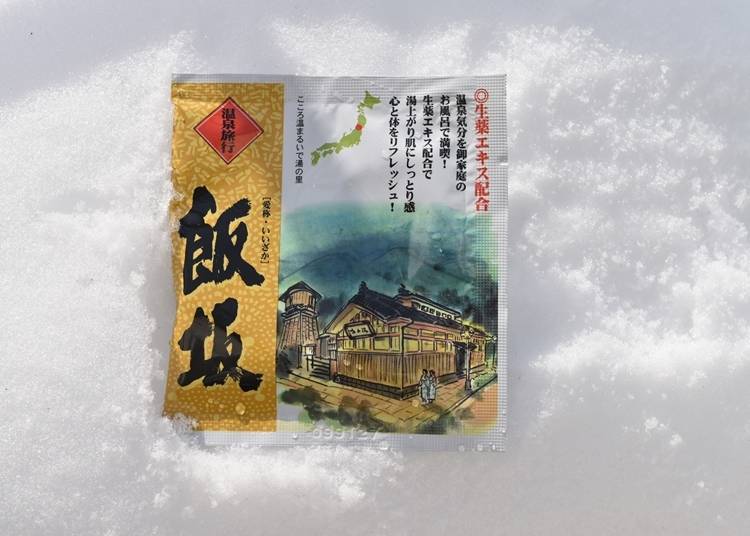
So, how does the bath salt based on the historic Iizaka Onsen fare? Sold by Goshu Yakuhin, "Onsen Ryoko - Iizaka" is a cloudy bath salt containing a number of active ingredients, such as dried sodium sulfate and sodium hydrogen carbonate. These minerals are good for fatigue relief, dry skin, heat rashes, acne, frostbite, and related disorders.
When trying these Japanese bath salts, we turned up the temperature to emulate the authentic Iizaka Onsen experience. The bath salt quickly transformed the water into a cloudy yellow, and because herbal essence has been included in its formula, the water was able to warm up the body right to the core. Your skin will feel fresh and moisturized after the dip.
Price reference: 110 yen per packet (minimum order of 5 packets if buying different bath salts separately)
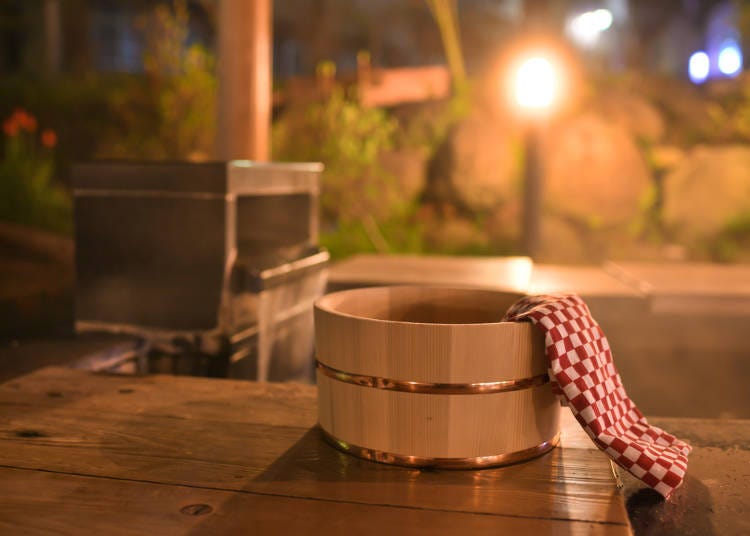
Here's a little more about the Japanese bath salt manufacturers featured in this article
Bathclin (Japan's Famous Baths)

Bathclin (formerly known as Tsumura Shuntendo) was the first company to start selling bath salts in Japan in the year 1897. The inventors of their "Japan's Famous Bath" series personally visited to the hot springs they based the bath salts on to thoroughly analyze and research the spring quality, color, and fragrance, so as to create a faithful reproduction of the bath experience.
Earth Corporation (Yakusen Meguri)
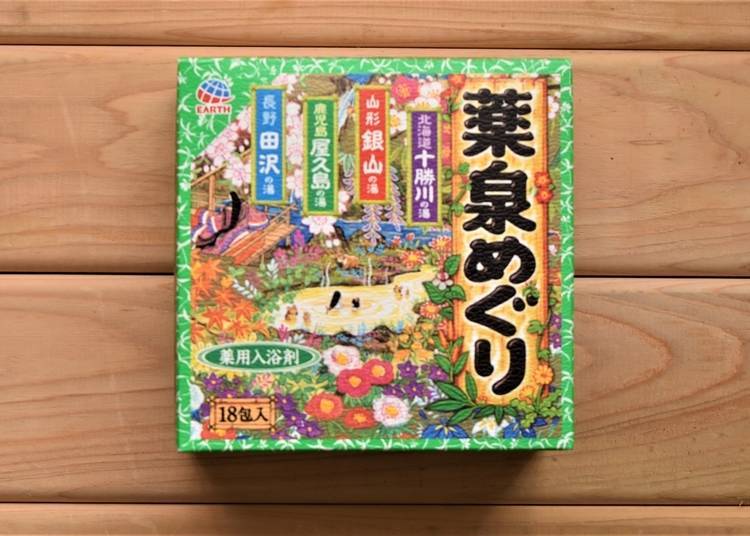
The company is a daily consumer goods manufacturer that has product lineups for almost everything under the sun, from insecticides to bath salts, oral care, deodorants, air fresheners, cleaning products, sanitary goods, and garden supplies, just to name a few.
Each packet of their "Yakusen Meguri" Japanese bath salt series contains a high concentration of active ingredients that will keep the body warm and promote better blood circulation.
Goshu Yakuhin (Onsen Ryoko)
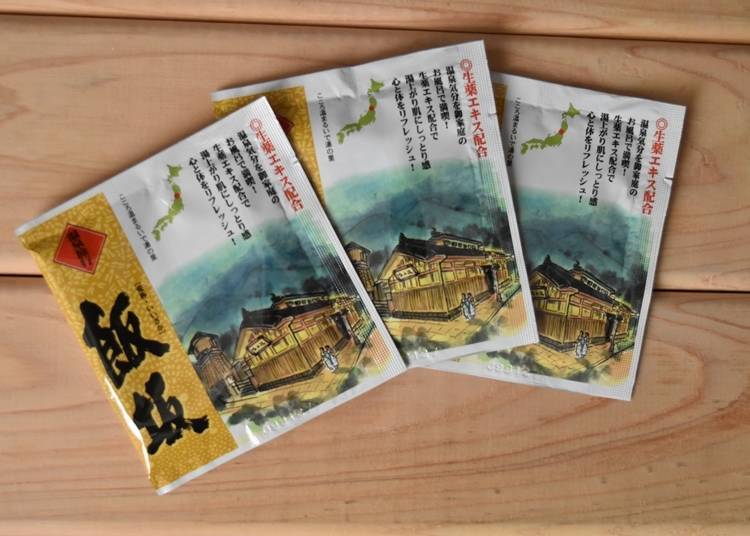
Goshu Yakuhin hails from Toyama Prefecture's Toyama City, known to be a place of abundant nature. As such, the company is involved in the research and development of related goods, such as mineral water, cosmetics, pharmaceuticals, and functional food products.
Their "Onsen Ryoko" bath salts have been infused with herbal essence to bring out colors and aromas that will recreate the unique charms of the original hot springs inside a regular home tub.
Now you can bathe in luxury without needing to leave home
Everyone knows taking a bath can be good for blood circulation and relieving fatigue. Add some Japanese bath salts to a comfortably warm tub to enhance these good effects and make them last longer!
The special colors and smells the salts release are excellent sensory relaxants as well. What better way to bring some of Tohoku's best-known and beloved baths to yourself without ever leaving home, right?
And if you're usually a shower-person, give the bathing experience a go with some of these bath salts! The sheer bliss and relief you'll feel after a nice, warm soak simply cannot be described by words alone. Stay home, stay safe, and stay warm and comfortable during this period!
(*Bath salt components will differ from the actual components found in the hot springs they were based on.)
Text by: Masakazu
* Information accurate as of January 2021. Check the product's official website for the latest information.
English translation by: Huimin Pan
- Area
- Category
*Prices and options mentioned are subject to change.
*Unless stated otherwise, all prices include tax.
Popular Tours & Activitiess
Recommended places for you
-

Aomori Museum of Art
Art Museums
Aomori, Hirosaki And Hachinohe
-

Koiwai Farm
Other Nature
Morioka, Hiraizumi And Hachimantai
-
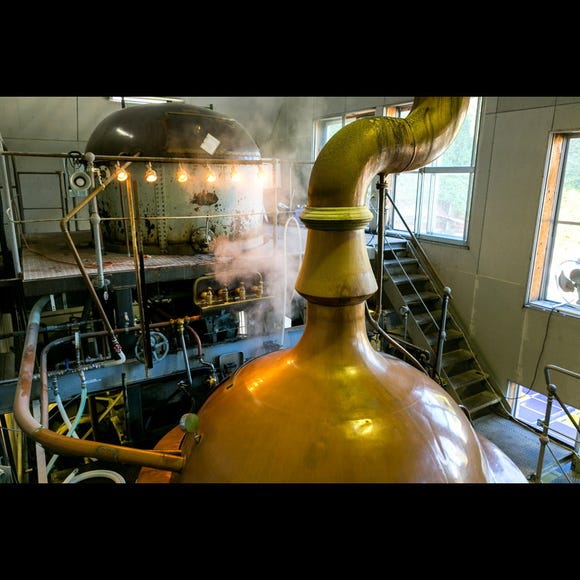
Baeren Brewery Co., Ltd.
Other Sightseeing
Morioka, Hiraizumi And Hachimantai
-

Sado Gold Mine
Winter
Niigata And Sado
-

Matsushima Bay
Landscapes
Sendai And Matsushima
-

Nikka Whisky Sendai Distillery
Culture Experience
Sendai And Matsushima
-
Ad

Just one stop from Haneda Airport! "Truly Japanese!" Food, Fun, and Knowledge Gather at HICityⓇ Enjoy An Electrifying Night at "Japan Night Fever: Haneda Innovation City"
by: Yohei Kato
-

Niigata Sake no Jin 2026: Guide to Japan's Most Legendary Sake Weekend
-

Dining in Yamagata: Must-Try Foods & Top Restaurants Near the Station
by: ShiroKu inc.
-
Ad

Why Fukushima is the Next Big Food Destination in Japan The Foodie Paradise Only 90 Minutes from Tokyo
-

What to Buy in Aomori? 11 Aomori Souvenirs Locals Actually Recommend
by: ShiroKu inc.
-

Shopping in Niigata: 9 Must-Buy Souvenirs & Local Sake to Take Home
by: ShiroKu inc.
-

Akita Bucket List: 20 Best Things to Do in Akita Prefecture For Tourists (Attractions, Local Foods & Activities)
-

Sake Vending Machine Heaven?! Inside Japan's Insane Ponshukan Sake Museum
-

Top 5 Akita Souvenirs: Cuddly Akita-inu Plushies, Ramen & More!
-

Iwate Bucket List: 20 Best Things to Do in Iwate Prefecture For Tourists (Attractions, Food, Activities)
-

Sumikawa Snow Park: Skiing in Northern Japan's Breathtaking Backcountry
-

20 Best Souvenirs From Sendai Station's Incredible Gift Shop!













